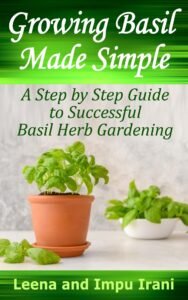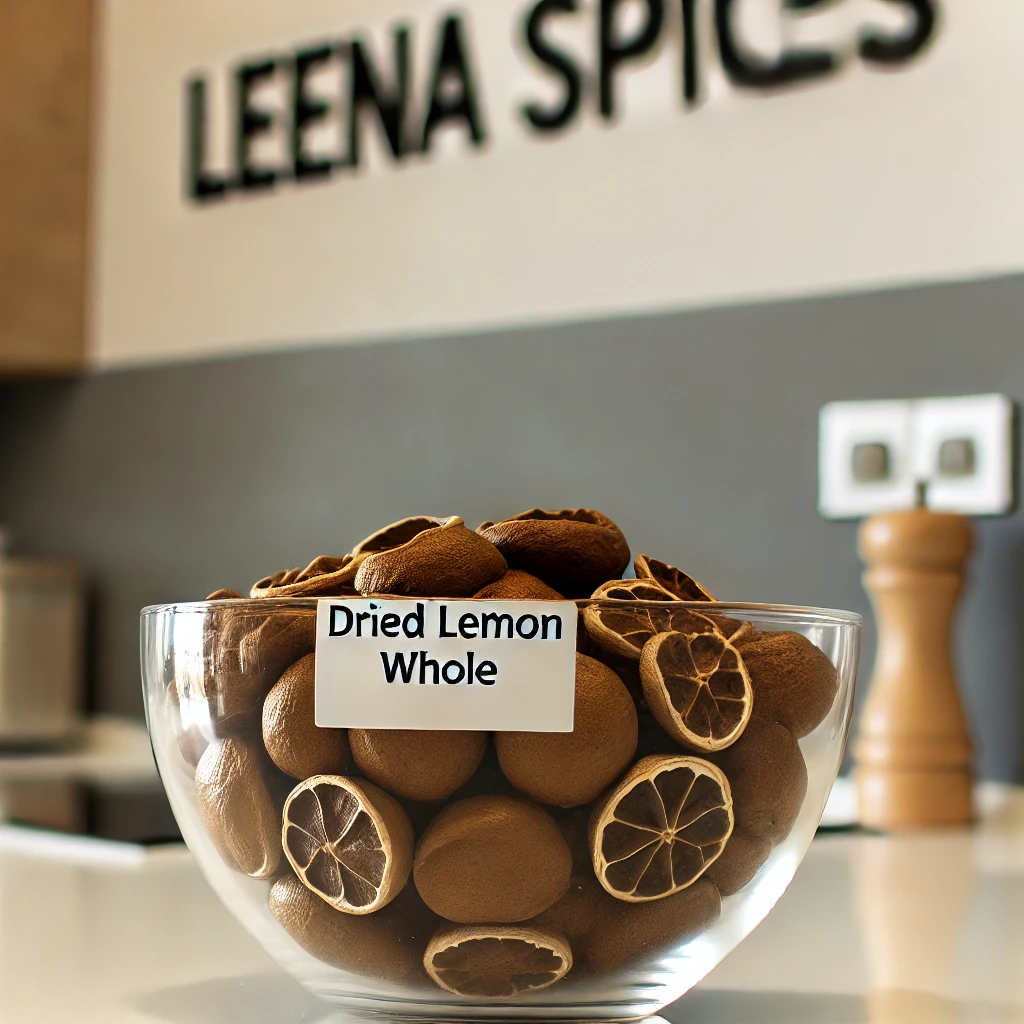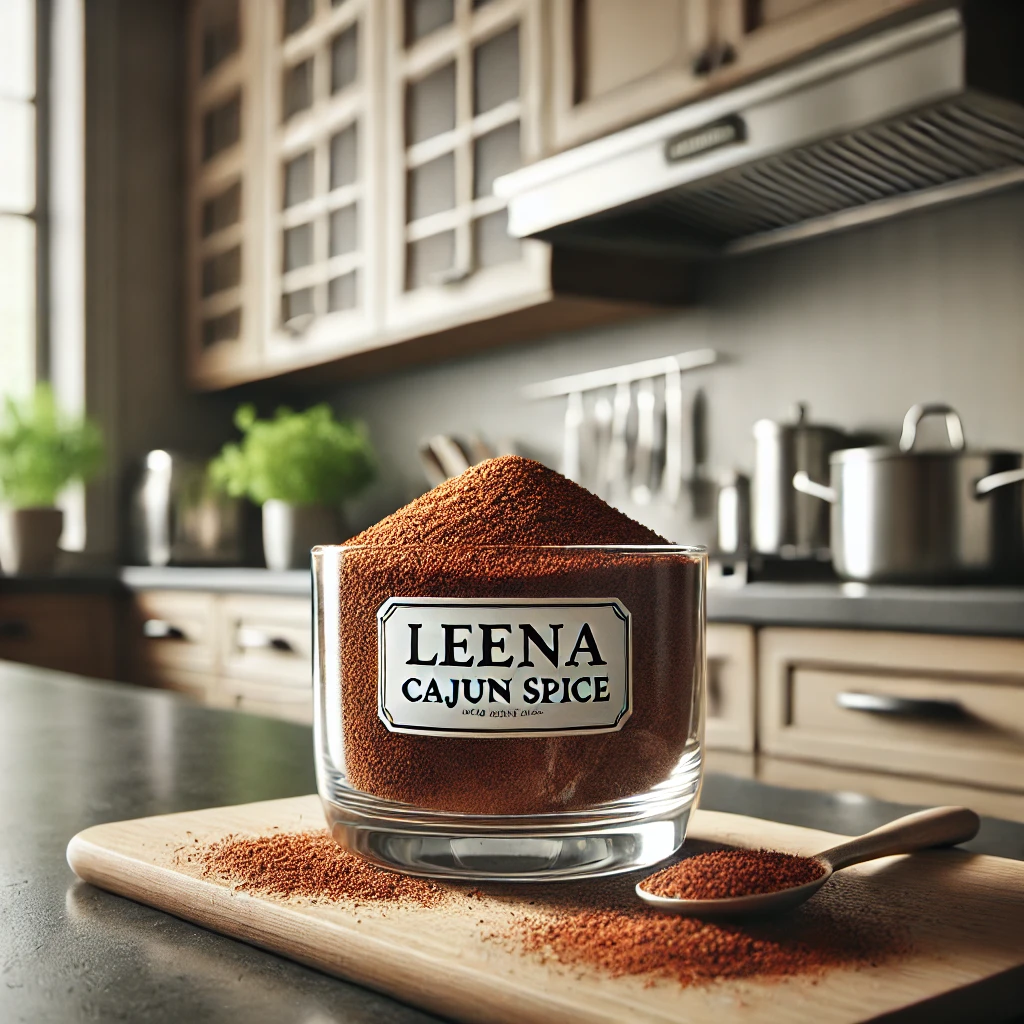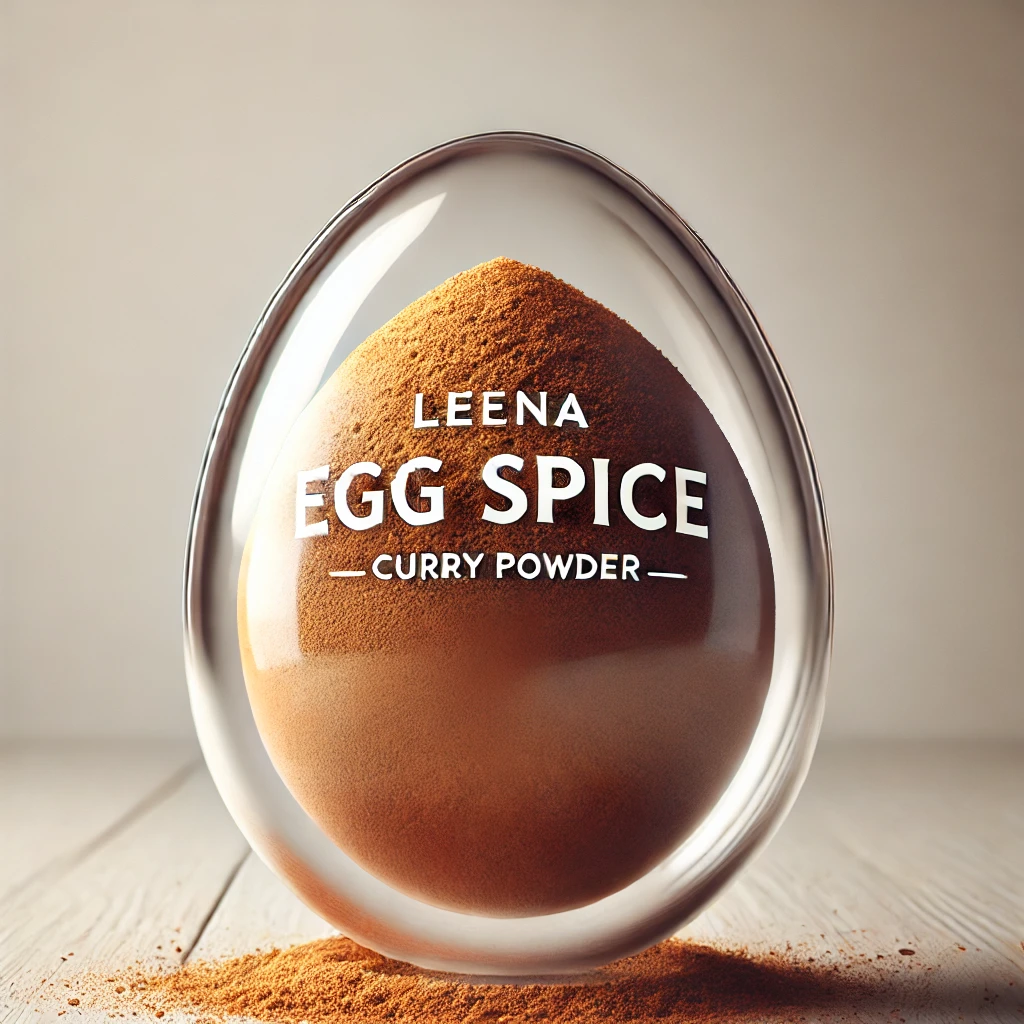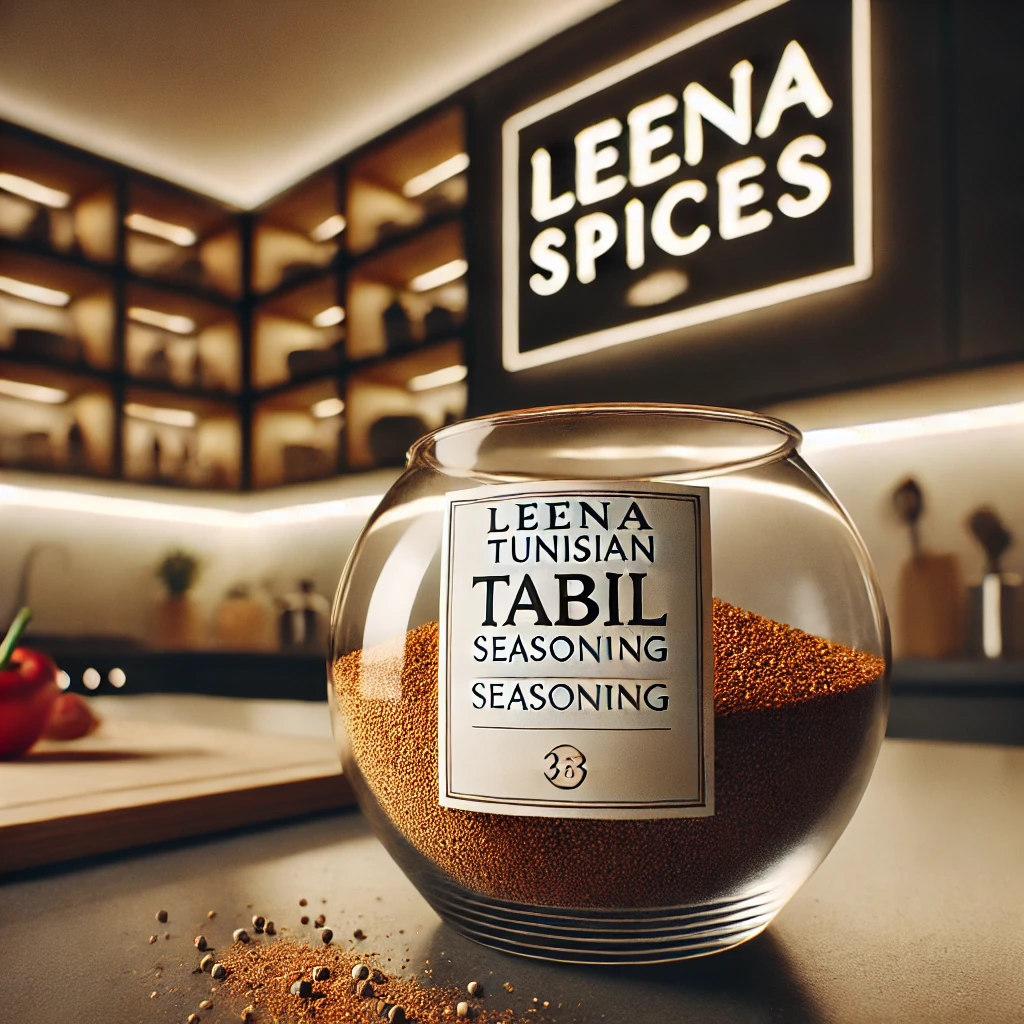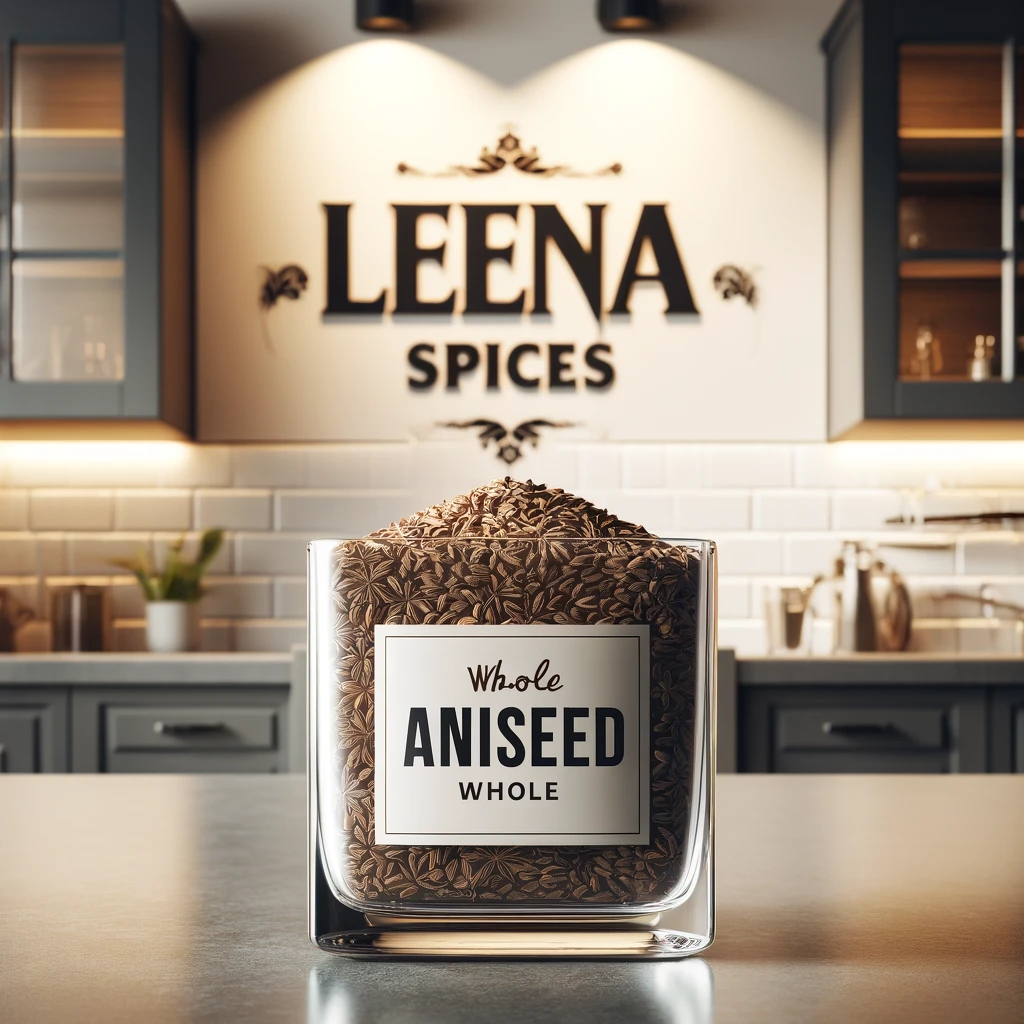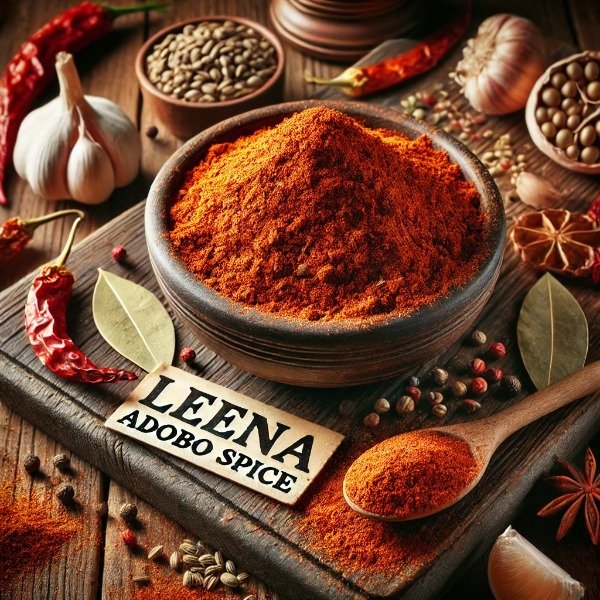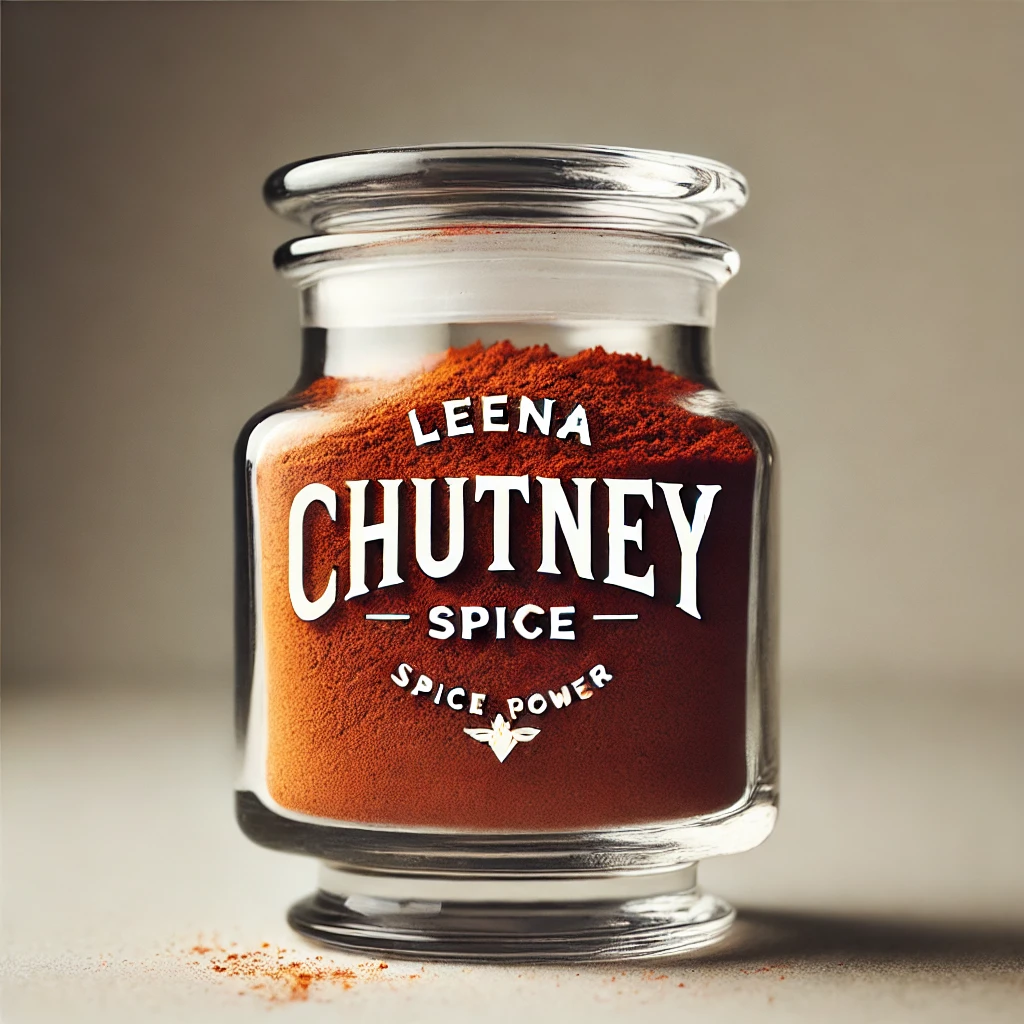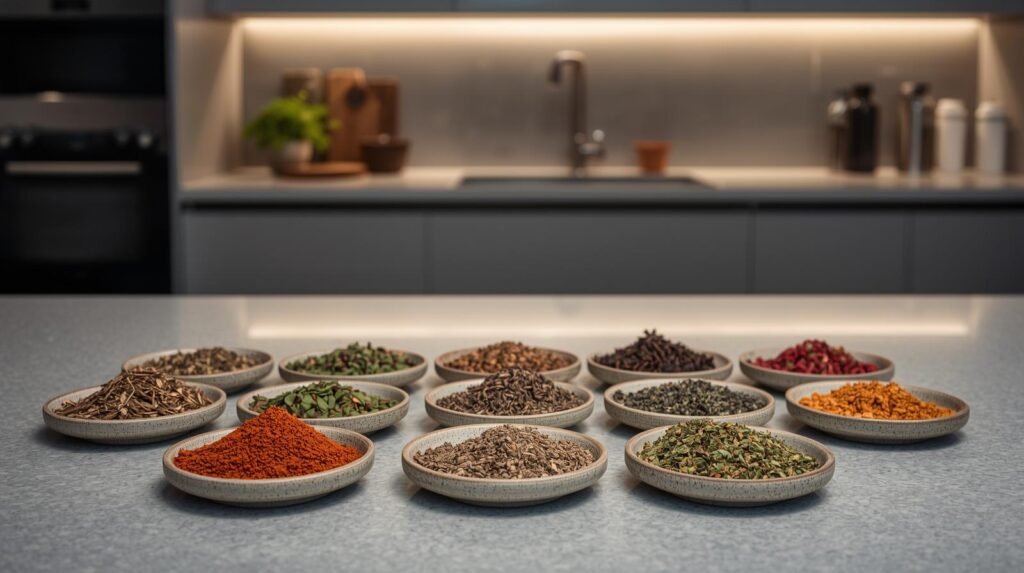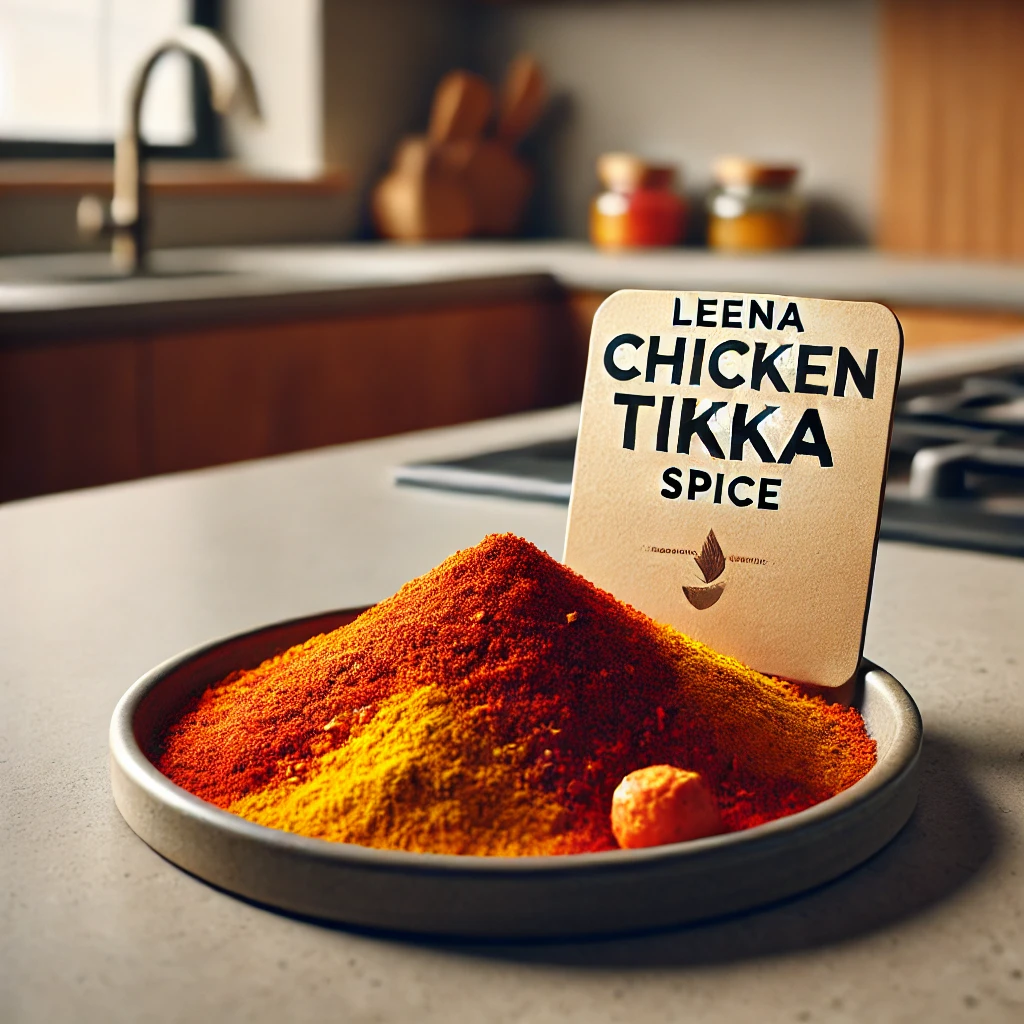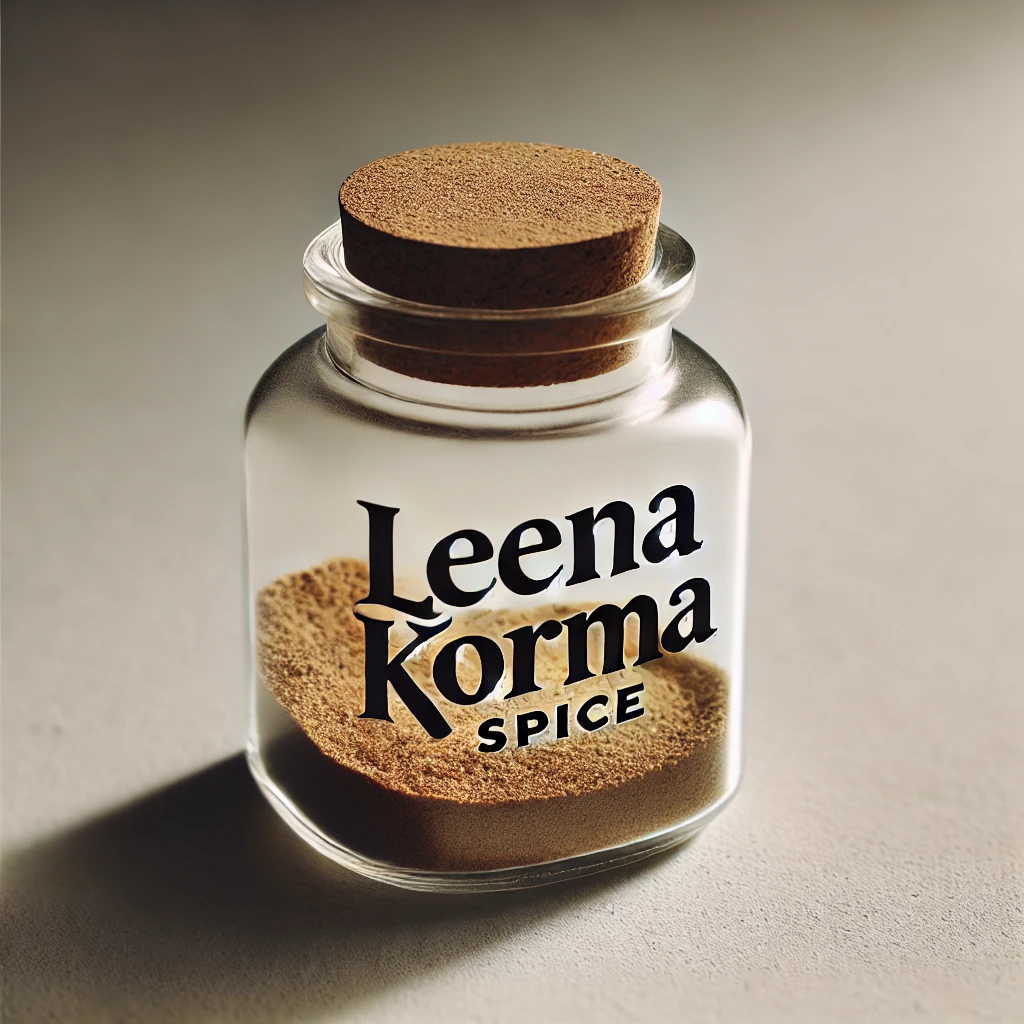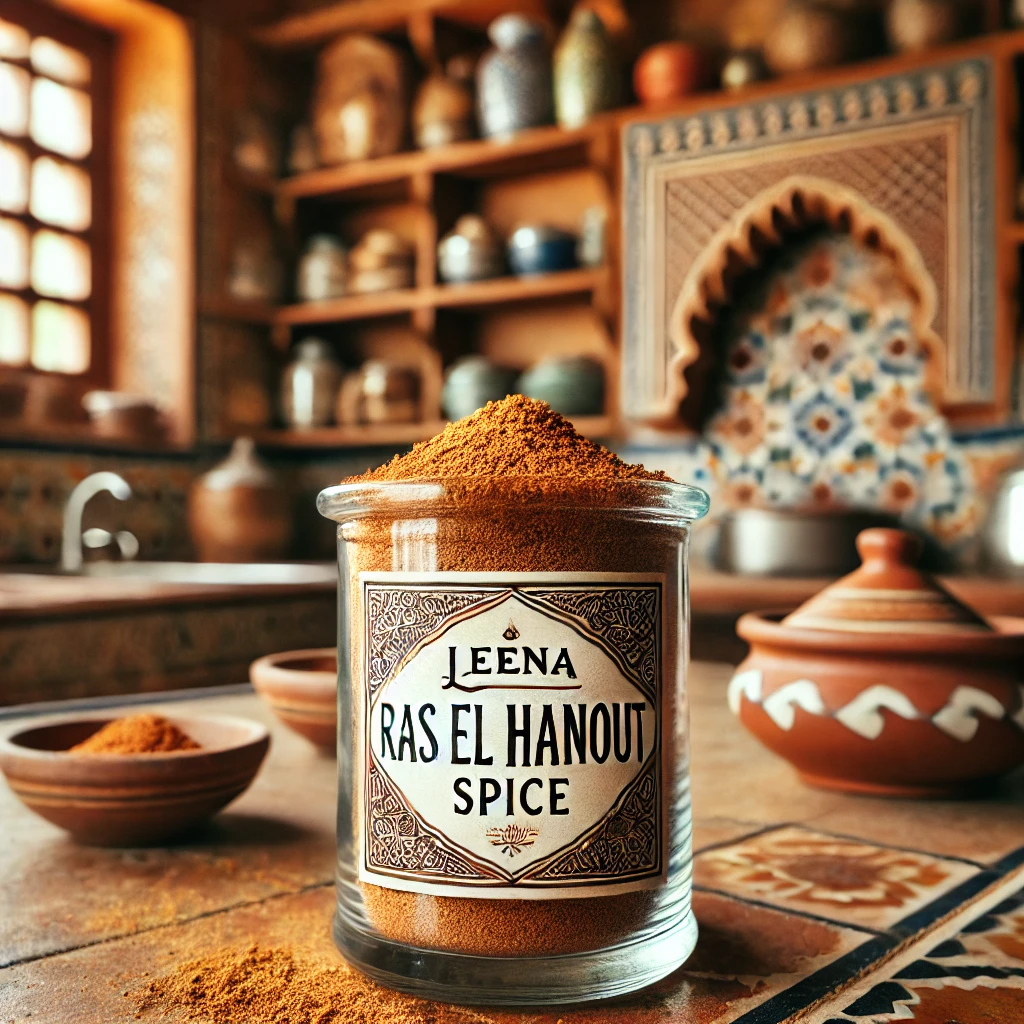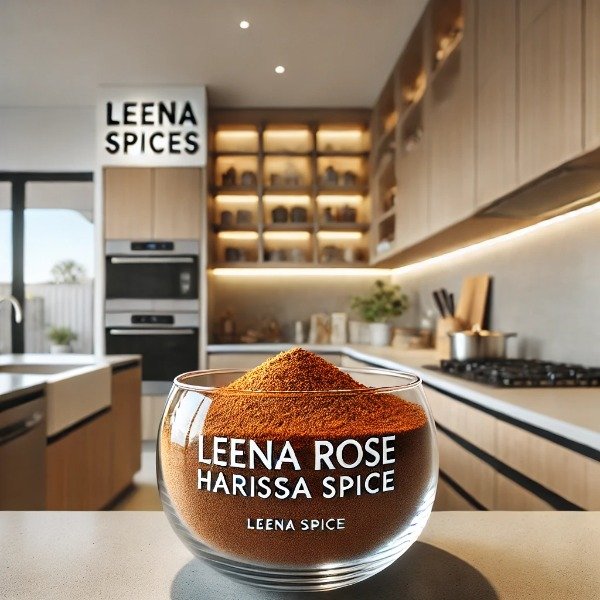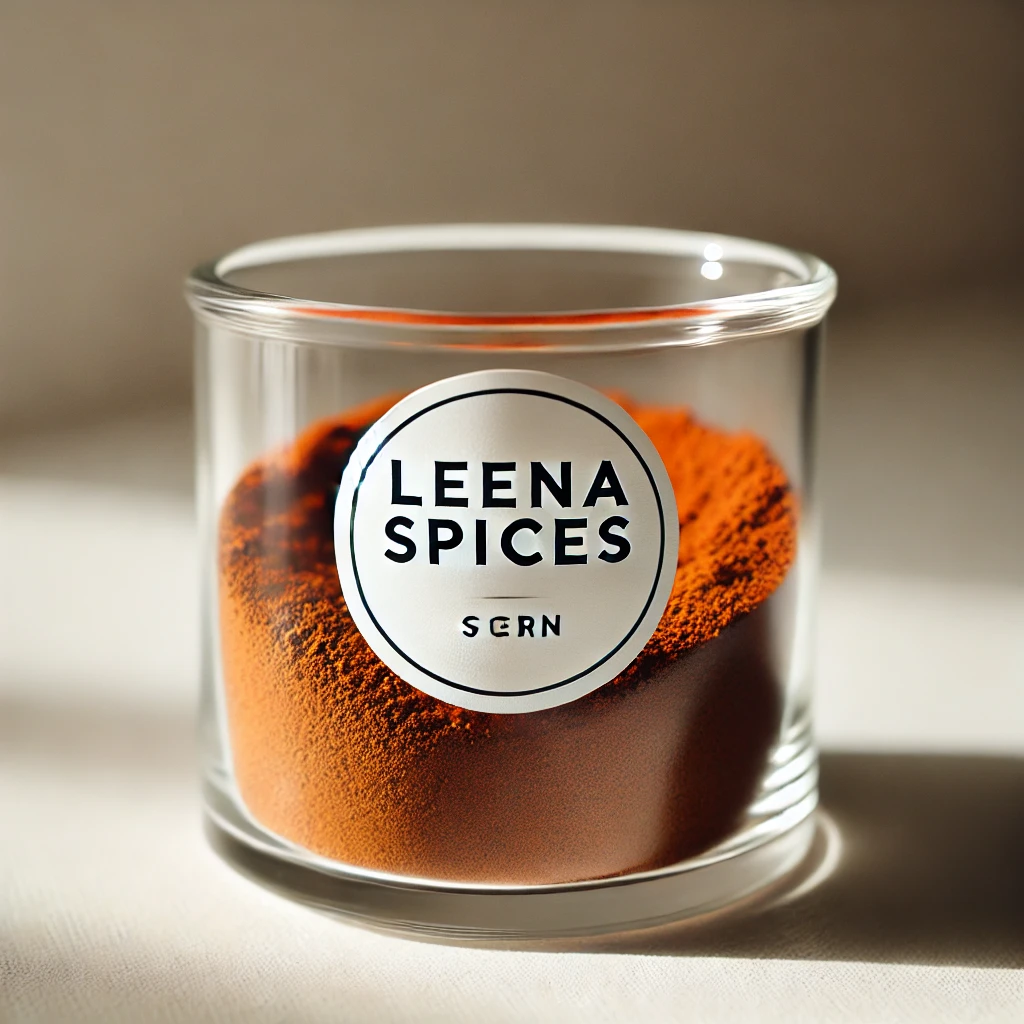7 Best-Kept Secrets to Using Whole Dried Galangal Slices Like a Pro

Table of Contents
- How to use dried Galangal
- Secret 1: Using for maximum flavor
- Secret 2: Grinding
- Secret 3: Marinating Meats
- Secret 4: Crafting Pastes
- Secret 5: Brewing Galangal Tea
- Secret 6: Galangal in Desserts
- Secret 7: Oils and Vinegars
- FAQs
- Conclusion
How to Use Whole Dried Galangal Slices in Cooking
Before adding dried galangal to your dish, it is important to lightly bruise or crack the slices. This simple step helps break down the tough, fibrous structure and releases the essential oils and flavor compounds trapped inside, ensuring maximum aroma and taste.
You can bruise the slices using the back of a knife, a pestle, or even gentle pressure with your fingers. This preparation step is especially useful for slow-simmered dishes like soups, stews, and curries, where it allows the galangal to fully infuse its earthy, peppery, and citrusy notes into the cooking liquid.
Rehydrate Before Use
To soften the slices and release their aroma, soak them in warm water for 20–30 minutes. Alternatively, you can add them directly to simmering broths or curries, such as Thai Tom Yum or Indonesian Rendang, allowing them to rehydrate as they infuse flavor. As a general guide, about 1 tablespoon of rehydrated dried slices can replace 3 tablespoons of fresh galangal, since dried galangal is more concentrated.
Common Culinary Applications of Dried Galangal
- Herbal Tea: Steep 2–3 slices in hot water for 5–10 minutes to create a warming, aromatic tea. This beverage is often enjoyed for its soothing properties and subtle spice notes.
- Soups and Curries: Add dried galangal to coconut milk-based soups and rich broths for earthy depth. Classic dishes include Thai Tom Kha Gai, Massaman Curry, and other slow-simmered curries and stews.
- Broths and Marinades: Simmer the slices in bone or vegetable broths to develop a flavorful base. They can also enhance marinades for chicken, fish, or other proteins, adding aromatic complexity.
- Cooking Rice: Toss a few slices into the pot while cooking rice to impart fragrance. Be sure to remove them before serving to avoid the tough texture.
- Infused Liquids: A few bruised slices can elevate coconut milk, infused oils, or marinades, adding layered flavor without overpowering the dish.
Substitution Notes
When replacing fresh galangal with dried, remember that the dried version is more concentrated in flavor. Use a smaller amount to avoid overpowering your dish. As a guideline, roughly 1 teaspoon of dried galangal is equivalent to about 1.5 cm of fresh galangal.
Quick Reference Table
Application | How to Use | Notes / Tips |
Herbal Tea | Steep 2–3 slices in hot water for 5–10 minutes | Creates a warming, aromatic tea; subtle spice and citrus notes |
Soups & Curries | Add slices to coconut milk-based soups or broths early in cooking | Ideal for Thai Tom Kha Gai, Massaman Curry, and other slow-simmered dishes |
Broths & Marinades | Simmer in bone or vegetable broth or add to marinades | Enhances flavor of chicken, fish, or vegetables; remove before serving |
Cooking Rice | Add slices to rice while cooking | Imparts fragrance; remove before serving |
Infused Liquids | Add bruised slices to coconut milk, oils, or marinades | Adds depth and complexity without overpowering |
Substitution Guide | 1 teaspoon dried ≈ 1.5 cm fresh galangal | Dried galangal is more concentrated; adjust amount to taste |
Secret 1: Using Whole Dried Galangal for Maximum Flavor
Whole dried galangal slices are best used as a flavor-infusing ingredient. Their tough, woody texture makes them unsuitable for eating directly, but when prepared correctly, they add earthy, peppery, and citrusy notes to soups, stews, and curries.
How to Use Whole Dried Galangal:
- Soak: Rehydrate the slices in warm water for 15–30 minutes to soften them.
- Bruise or Crack: Lightly press, smash, or crack the slices to release essential oils and flavor compounds.
- Add Early: Place the prepared slices in broths, soups, or curries at the beginning of cooking to allow full infusion.
- Simmer: Let them cook for at least 15–20 minutes, or for the entire duration in slow-simmered dishes.
Removing Dried Galangal Before Serving
Even after soaking or cooking, whole dried galangal slices remain tough and fibrous, making them unsuitable for eating. For the best dining experience, remove the slices from the dish before serving, just as you would with bay leaves or other infusing herbs. If the slices remain in the pot, it’s important to warn diners not to consume them, as their texture can be unpleasant and difficult to chew.
Secret 2: Grinding Dried Galangal for Powder or Paste
- Rehydrate (Optional): Soak slices in warm water for 15–30 minutes to soften before making a paste
- Grinding into Powder (Optional):
Break the dried slices into smaller pieces and use a spice grinder or mortar and pestle to grind them into a fine powder. For an extra boost of aroma, you can lightly toast the slices in a dry pan before grinding. The resulting powder is excellent for spice blends, rubs, or marinades, and it stores well when kept in an airtight container. - Grinding into Paste:
If your recipe calls for a paste, rehydrate the slices first by soaking in warm water for 15–30 minutes. Then grind them in a mortar and pestle until smooth. Because dried galangal is fibrous, creating a paste takes some effort, but the result is a rich, aromatic base for curries, marinades, and spice rubs.
Dried Galangal Spice Blend
Create a versatile and aromatic spice blend using dried galangal as the star ingredient. This blend works beautifully for seasoning meats, vegetables, or even adding a gourmet twist to snacks like popcorn.
Ingredients:
- 1 tablespoon dried galangal, ground into powder
- 2 tablespoons ground coriander
- 1 tablespoon ground cumin
- 1 teaspoon ground turmeric
- Optional: ½ teaspoon black pepper or chili powder for heat
Instructions:
- Grind the Galangal: If not already powdered, grind the dried galangal slices using a spice grinder or mortar and pestle until fine.
- Combine Spices: In a small bowl, mix the galangal powder with coriander, cumin, turmeric, and optional spices.
- Store: Transfer the blend to an airtight container and store in a cool, dark place for up to six months.
- Use: Sprinkle over roasted vegetables, mix into marinades for meats, or even dust over popcorn or rice dishes for a unique aromatic flavor.
This spice blend showcases dried galangal’s earthy, peppery, and citrusy notes, elevating everyday dishes into aromatic, flavor-packed creations.
Secret 3: Marinating Meats with Dried Galangal
Dried galangal’s bold, earthy, and slightly citrusy flavor makes it an ideal ingredient for marinating meats, particularly poultry and seafood. Beyond adding depth, galangal contains natural enzymes that can help tenderize meat, resulting in juicy, flavorful dishes.
How to Prepare Galangal for Marinades:
- Soak: Rehydrate dried slices in warm water until soft.
- Crush or Grate: Lightly crush or grate the softened galangal to release essential oils and maximize flavor infusion.
- Combine: Mix with other marinade ingredients such as garlic, lemongrass, chili, soy sauce, and a touch of citrus.
- Marinate: Coat your meat and allow it to marinate for at least 2 hours. For a stronger, more aromatic flavor, marinate overnight.
Recipe Idea: Galangal-Lemongrass Chicken
Create a fragrant and flavorful marinade by combining dried galangal, lemongrass, garlic, soy sauce, and a hint of honey. Marinate chicken pieces thoroughly, then grill or bake until cooked through. The result is aromatic, tender, and deeply flavorful chicken that highlights the unique character of galangal.
Secret 4: Crafting Authentic Spice Pastes with Dried Galangal
How to Make Galangal Spice Paste:
- Soak: Rehydrate the dried galangal slices in warm water until softened.
- Combine Ingredients: Mix with fresh herbs and aromatics such as cilantro roots, shallots, garlic, lemongrass, and chilies.
- Blend: Use a food processor or mortar and pestle to grind the mixture into a smooth, fine paste.
- Store: Transfer to an airtight container and refrigerate for up to one week. For longer storage, freeze in small portions.
Recipe Idea: Thai Red Curry Paste
Combine dried galangal, red chilies, garlic, shallots, and kaffir lime leaves to create a fragrant Thai red curry paste. Use it in curries, stir-fries, or soups to impart a complex, aromatic base that is unmistakably Southeast Asian.
Check out these Posts
Discover the 7 Amazing Powers of Whole Dried Galangal Slices
What Is Ground Galangal Powder? Top 10 Must-Try Thai, Indonesian & Malaysian Dishes
What Are Nigella Seeds? Kalonji vs Black Seed vs Black Cumin Explained
29 unique recipes and creative ways to use cinnamon sticks in cooking
9 Incredible Benefits of Asario Seeds That Will Transform Your Health Naturally
Secret 5: Brewing Galangal Tea – A Soothing Herbal Beverage
Dried galangal can be transformed into a warming, aromatic tea that’s not only delicious but also supports digestion and helps soothe colds or sore throats. Its earthy, peppery, and slightly citrusy notes create a comforting herbal drink perfect for any season.
How to Brew Galangal Tea:
- Boil Water: Bring a pot of water to a gentle boil.
- Add Galangal: Drop in 2–3 whole dried galangal slices.
- Simmer: Let the slices simmer for about 10 minutes to fully extract their flavor.
- Strain and Serve: Strain the tea into cups and add honey or a squeeze of lemon to enhance both taste and health benefits.
Variations:
- Add warming spices like cinnamon, star anise, or cloves for a spiced version.
- Serve the tea hot for a soothing drink or chilled for a refreshing beverage during warmer months.
This simple preparation allows you to enjoy the therapeutic and aromatic qualities of galangal in a versatile, easy-to-make herbal tea.
Secret 6: Incorporating Galangal into Desserts – A Surprising Sweet Element
Although dried galangal is commonly associated with savory dishes, its earthy, peppery, and citrusy notes can add a unique twist to desserts. When infused into creams, custards, or syrups, it introduces an exotic, aromatic flavor that complements sweetness beautifully.
How to Use in Desserts:
- Infuse: Add whole dried galangal slices to coconut milk, cream, or simple syrup and gently simmer to extract the flavor.
- Remove Slices: Strain out the galangal before combining with other dessert ingredients.
- Pair with Fruits or Cakes: Use the infused liquid as a syrup for fruit salads, drizzle over cakes, or incorporate into custards and puddings.
Recipe Idea: Galangal-Infused Coconut Custard
- Gently heat coconut milk with 2–3 dried galangal slices until aromatic.
- Remove the galangal and combine the milk with sugar and eggs to create a custard base.
- Bake or steam according to your favorite custard recipe.
The result is a delicately spiced dessert with a subtle citrusy warmth, perfect for impressing guests at a dinner party or adding an unexpected twist to everyday sweets.
Secret 7: Galangal-Infused Oils and Vinegars – Adding Flavor to Your Pantry
Whole dried galangal slices can be used to infuse oils and vinegars, creating aromatic condiments that elevate a variety of dishes. These infusions are simple to make and versatile, perfect for dressings, marinades, stir-fries, or as a finishing touch for cooked meals. The subtle, peppery, and citrusy notes of galangal lend a unique depth to both cooking and raw applications.
How to Make Galangal-Infused Oils or Vinegars:
- Heat the Base: Gently warm a neutral oil (like grapeseed or sunflower) or vinegar (such as rice vinegar) over low heat.
- Add Galangal: Drop in dried galangal slices and let them steep for 15–20 minutes, ensuring the flavors infuse evenly.
- Cool: Remove from heat and allow the mixture to cool.
- Strain: Filter out the galangal slices to leave a smooth, aromatic infusion.
- Store: Pour into a sterilized, airtight container and store in a cool, dark place.
These infused oils and vinegars are a convenient way to add complexity to your everyday cooking, allowing the unique aroma of galangal to enhance a wide range of dishes with minimal effort.
FAQs
What does dried galangal taste like compared to fresh?
Dried galangal has a stronger, earthier, and slightly more bitter flavor than fresh. The citrusy brightness fades a bit during drying, while its woody and peppery notes become more concentrated.
Can I eat the slices after cooking?
Not really. Even after simmering, dried galangal slices remain tough and fibrous. They’re best treated like bay leaves—used for infusion and removed before serving.
How much dried galangal should I use instead of fresh?
Since dried galangal is more concentrated, use about one-third the amount of dried slices compared to fresh. For example, 1 tablespoon of rehydrated dried galangal equals about 3 tablespoons of fresh.
What’s the best way to rehydrate dried galangal?
Soak slices in warm water for 15–30 minutes before cooking. If you’re short on time, you can drop them directly into simmering liquid, though soaking gives you better control of flavor intensity.
Can I grind dried galangal into powder at home?
Yes! Break the slices into small pieces, then grind them in a spice grinder or mortar and pestle. Toasting the slices lightly before grinding can boost their aroma.
Is dried galangal the same as ginger?
No. While they’re related, ginger is sweeter and warmer, while galangal is sharper, piney, and more peppery. Substituting one for the other changes the dish’s character, though in a pinch ginger can be used with a squeeze of lime for brightness.
What dishes benefit most from dried galangal?
Dried galangal shines in slow-cooked dishes like curries, soups, stews, broths, and marinades. It’s a staple in Southeast Asian cuisine, particularly Thai and Indonesian recipes like Tom Yum, Tom Kha Gai, and Rendang.
How should I store dried galangal slices?
Keep them in an airtight container in a cool, dark, and dry place, like a pantry or spice cabinet. Properly stored, they can last for up to two years while maintaining good potency.
Can dried galangal be used in desserts?
Yes! Its subtle citrusy and spicy notes can be infused into coconut milk, syrups, or custards, adding an exotic twist to sweets like puddings, ice creams, and fruit salads.
Conclusion
Whole dried galangal slices are more than just a substitute for the fresh root. They are a spice with their own unique identity, offering bold, earthy, and peppery notes that can transform a dish. From infusing broths and curries to creating teas, marinades, desserts, and even infused oils, galangal opens the door to authentic Southeast Asian cooking and beyond.
By learning how to soak, bruise, grind, or infuse it properly, you unlock its full potential and ensure your dishes carry the depth, aroma, and character that only galangal can provide. Whether you are a curious home cook or an experienced chef, keeping dried galangal in your pantry means you’ll always have a versatile, long-lasting ingredient ready to elevate your cooking.
Think of galangal as more than a spice. It is a bridge to rich traditions, bold flavors, and new culinary discoveries. Once you start experimenting, you’ll wonder how your kitchen ever managed without it.

